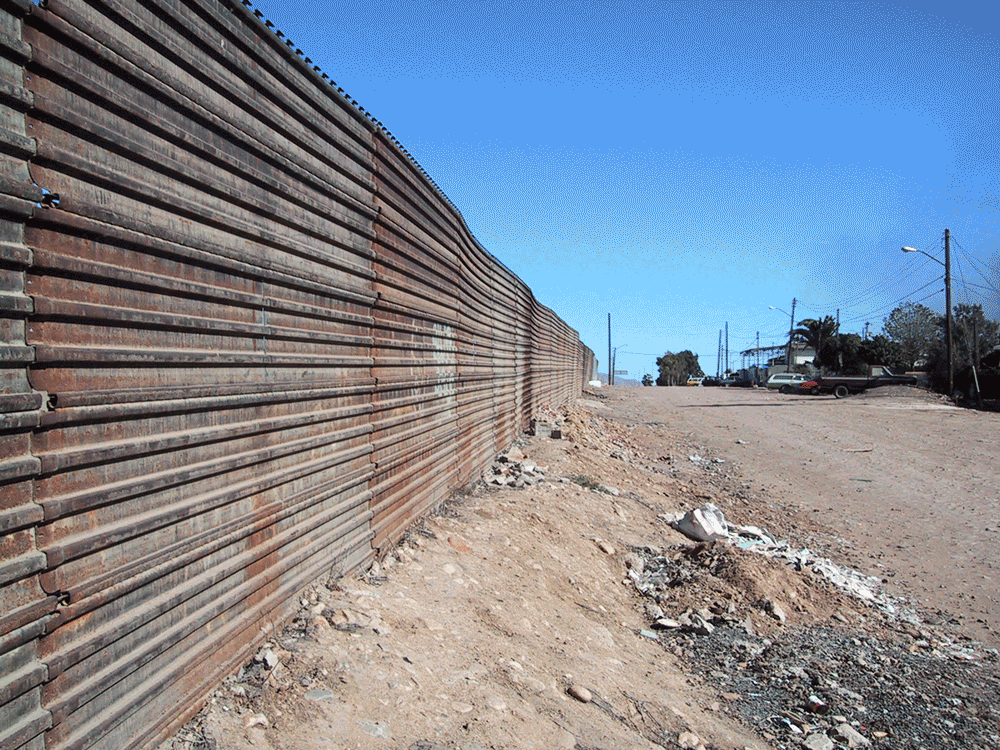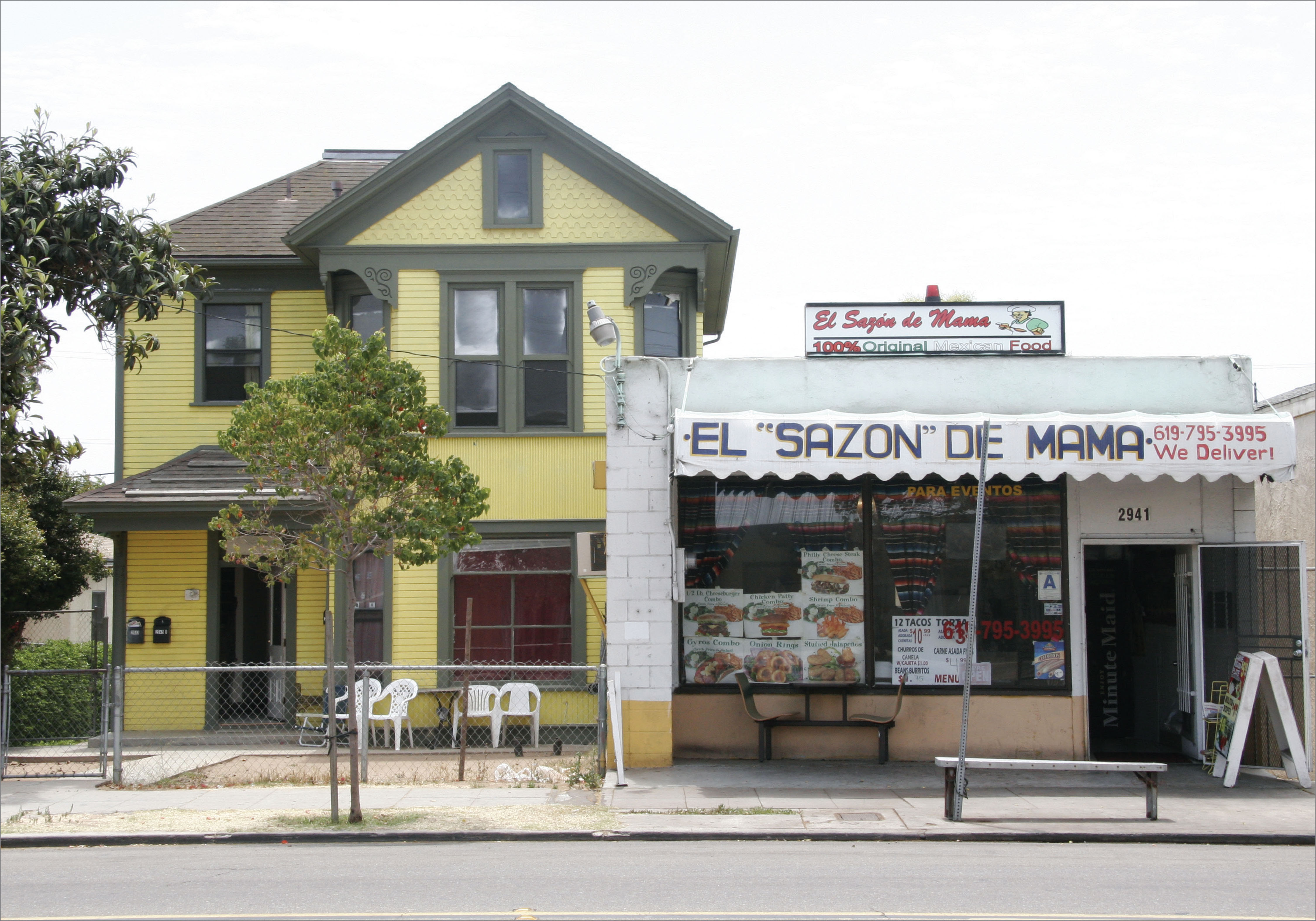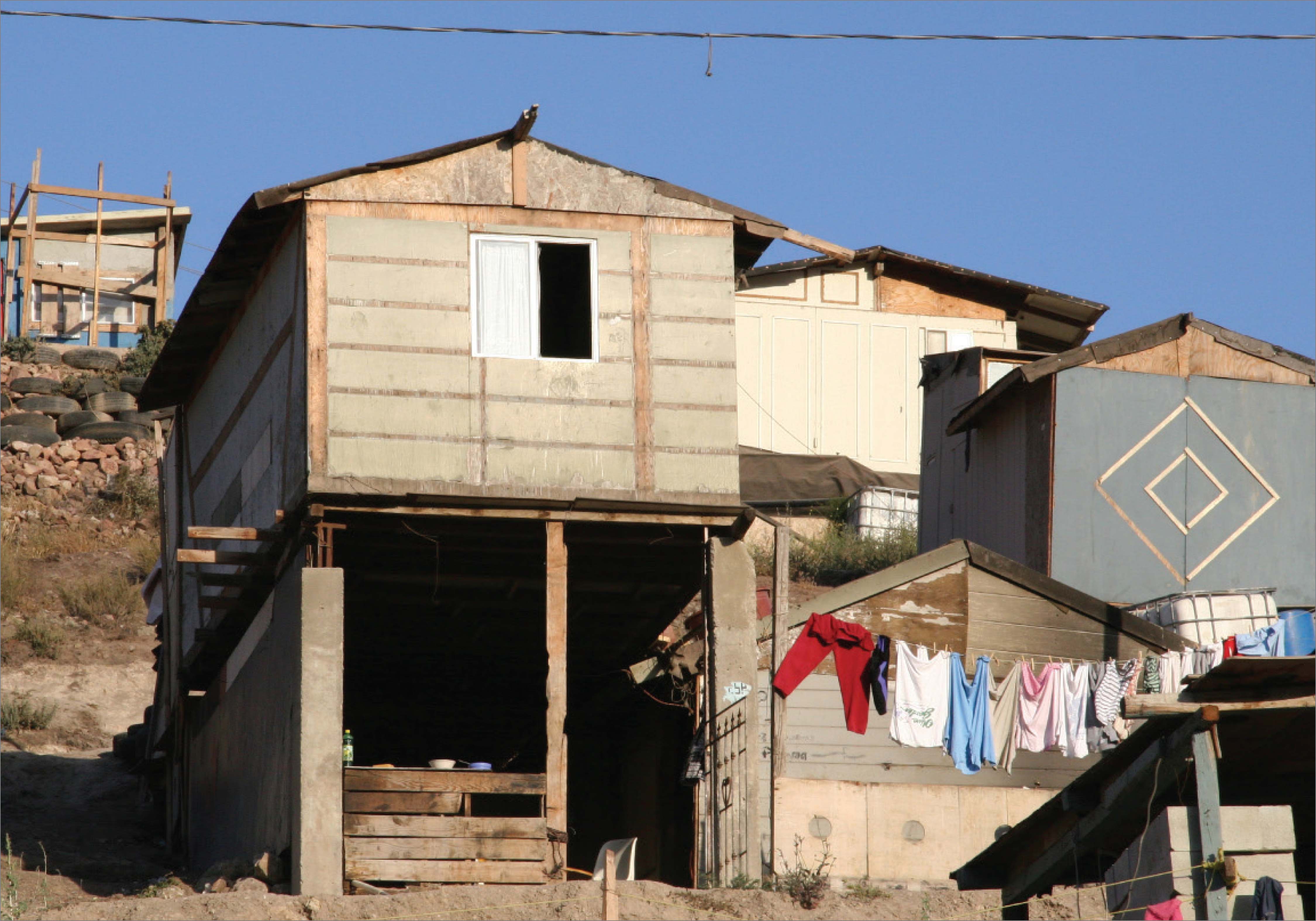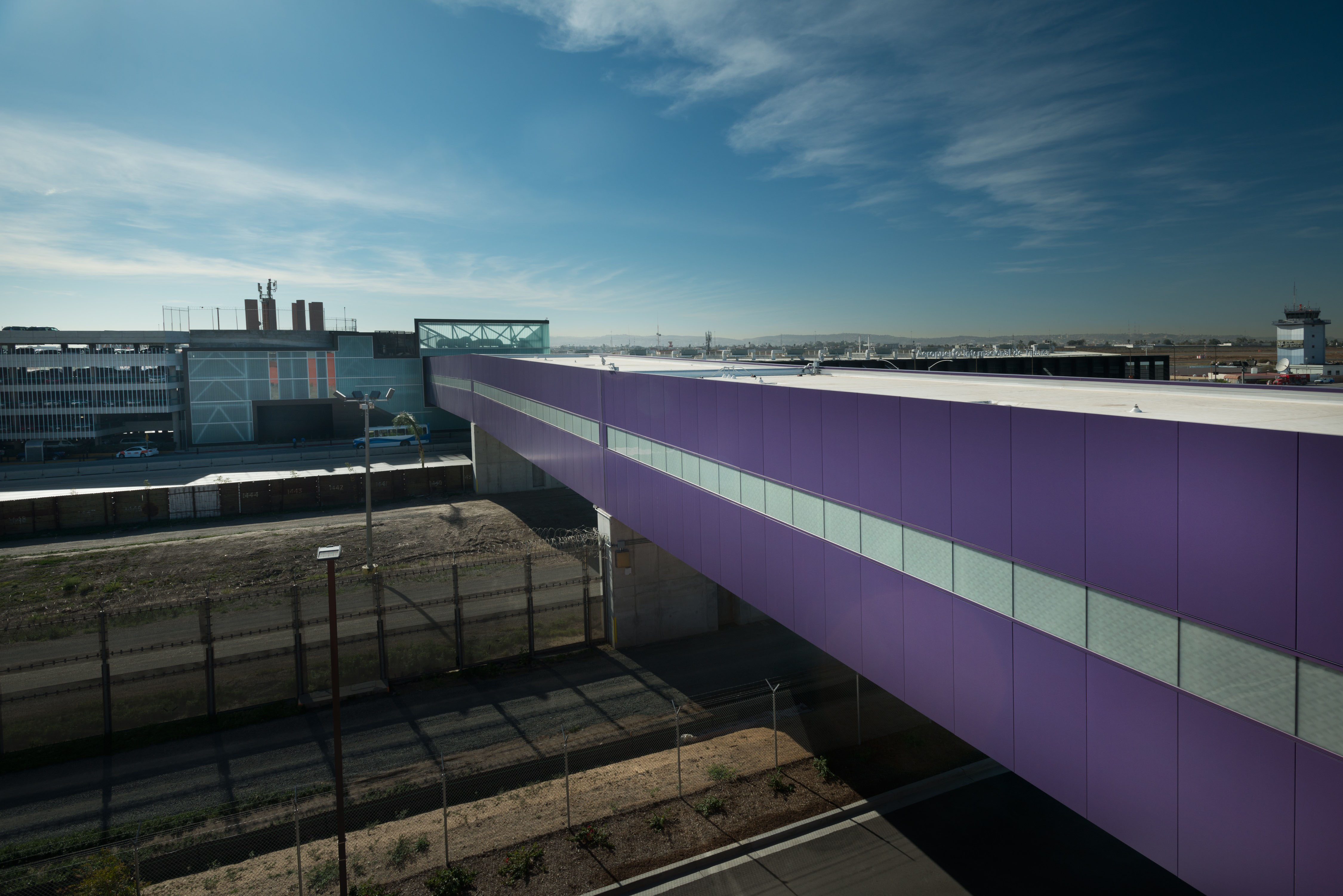The 2016 election saw the US–Mexico border—or specifically the US–Mexico border wall—cast as the central protagonist in Donald Trump’s anti-immigration script. In the imaginations of many Americans, the wall became an architectural object on which to project their collective fear of the “other” and the lens through which immigrant communities were again criminalized. This, of course, is not a new phenomenon—antagonism toward immigration has accompanied economic anxieties throughout US history—but only since the Patriot Act has the antidote to these anxieties been offered as a spatial solution, and only in the most recent election has “the wall” carried such powerful symbolic weight as a physical fortification.1 The reality of politics and mobility within and beyond the border zone, however, is much more complex. For some of us living and working across the US–Mexico border it has been important to tell a different story.
The San Diego–Tijuana border region is one such geography of complexity and conflict—a place where marginalization is physicalized. It is a place where US investment in surveillance and control shows its face, boldly exposing its commitment to exclusion, exacerbating “us” versus “them,” and instigating a climate of protectionism and border hysteria that has gripped geopolitics across the globe, from the rise of Donald Trump in the United States to “fortress-Europe” to Brexit.
As architects and citizens living at the San Diego–Tijuana border, we must take an ethical stand. To remain “neutral” is to be complicit in narratives and agendas that advocate what is unequivocally wrong. Today, in fact, more than ever, architects need to take a position: xenophobia is wrong. Inequality is wrong. Building border walls is wrong.
The border between San Diego and Tijuana is the object of this review. It was a chain-link fence in the seventies, a steel wall constructed with temporary landing mats discarded by the US military after Operation Desert Storm in Iraq in the nineties, and is today flanked by a second wall made of concrete pylons crowned by electrified coils and panoptic night-vision cameras, enveloping a new no-man’s land. The wall has hardened since 9/11 with the deepening of anti-immigrant sentiment and the consolidation of economic power from the many to the few, which has undermined collective responsibility to serve private interests. In fact, when we link xenophobia with the pervasive anti-public agenda that has dominated political discourse in recent years, it is possible to say that the wall and its expansion represents a picket fence encircling a misguided view of democracy as the right to be left alone, rejecting a classical ethical imperative to coexist with others—the very foundation of the demos.


The border wall not only divides the United States from Mexico, creating false perceptions of distance and antagonism, but it is also reproduced invisibly across the United States, from the grand scale of the national electorate to the microscale of our neighborhoods and communities. In other words, as the border has become a site of criminalization, the polarization of communities at the US–Mexico border resonates with the exclusion and urban violence we have been witnessing with increasing intensity. In many American cities—from Ferguson to Baltimore and back again to Chicago—marginalization, racism, inequality, and public divestment continue to divide communities and institutions. Only the most myopic politics could conclude that building a wall across a geopolitical border would solve our problems or that ending violence in our neighborhoods requires the same old magic bullet of “law and order.”
It has been demonstrated historically that urban violence is rooted in social and economic inequality and is exacerbated by the harm that public divestment inflicts on already vulnerable communities.2 In other words, public defunding and urban violence are causally intertwined. Unchecked “free-market” logics that de-tax the wealthy consolidate economic and political power to benefit the very few at the expense of the many. It is therefore tragic that the rhetoric of job creation continues to seduce working people, and even many marginalized demographics across this country, into believing that the deregulation of their employers is a safer path to social security than the robust social democratic infrastructure that has served as the backbone of public commitment in this country throughout the last century. Our own national history demonstrates that intelligent public investment, particularly in times of economic uncertainty, has stimulated economic growth and improved the quality of life for all citizens, rich and poor alike. And yet, the ahistorical and arrogant agenda that has been put forth by the Trump administration threatens to unravel many of the advances of the last century and to enflame already volatile conditions in urban neighborhoods further disadvantaged in the aftermath of the global economic recession. The consequences of these policies will vary from context to context. In our region—the largest binational metropolitan region in the world, as well as its most trafficked border—the increased fortification of the physical barrier in the years to come will only exacerbate antagonism and intensify inequality between Mexicans and Americans, between enclaves of wealth and sectors of poverty. Of course, there is wealth in Tijuana, just as there is poverty in San Diego. But the wall reinforces the very real disparities between these two cities at a critical time when we should instead be asserting our common future and the need for shared solutions to challenges such as regional economic inequality and climate change. Even the business communities in this region, along with conservative San Diego mayoral administrations over time, acknowledge that increased border control hinders regional economic growth, which depends on the easy movement of goods, services, and people, back and forth, across the international border.3
January 20, 2017, will bring about a dramatic reaffirmation of privatization and trickle-down fallacies, public divestment, unbridled racism, xenophobia, isolationist militarism, and law and order. All of these antisocial and anti-public impulses converge ultimately in the specter of a new transnational border wall against Mexico and against the world. The pain caused by this next wave of isolationism, alongside the assaults on our public institutions, will be excruciating. It will be a period of dramatic closure, a “patriotic” withdrawal from international cooperation in an attempt to “regain” sovereign greatness, emblematized by the hardening of physical barriers. “Build the wall,” they chant. But even if the wall is never built physically, psychic walls are already in place—traumatizing immigrants across the country, many of whom will be further severed from their families and friends, alienating and marking each crosser passing north through the San Diego checkpoint as a suspect. The border reality we witness today represents the ugliest version of racist and exclusionary citizenship since Jim Crow. This new fact-free, Orwellian realm of walls and draconian control and propaganda—in which a climate change denier will run the Environmental Protection Agency, and key public institutions like the Department of Education will be dismantled and reorganized along anti-public commitments—will only benefit the wealthy and powerful and dismantle our social safety net.
All of these dynamics and repercussions take on a particular human poignancy and ethical urgency in the border region where we live and work. For us, and many others across the US–Mexico continental border, the immediate task is to protect those who are targets of public reprisal and political repression. It is reassuring that many cities (like San Diego) and institutions (like our university, UC–San Diego) have declared themselves sanctuaries for immigrants and fortresses of resistance against any attempt to violate the human rights and dignity of vulnerable demographics in our society. Citizens of an ethical polity must protect its weakest members. But to achieve this necessary goal in a sustained fashion, we must address the social attitudes and belief systems that have been corrupted (or perhaps resuscitated and validated) in recent years by poisonous political rhetoric. It is astonishing that in the twenty-first century we find ourselves returning to the experiments of Stanley Milgram and Robert J. Lifton to make sense of public acquiescence and embrace of open racism and promises of mass expulsion in our political discourse.4
In seeking more inclusive ideas of citizenship, we have been inspired by cities across Latin America that have tackled conflict, violence, and poverty through experiments in participatory civic culture, collaborative municipal governance and planning, progressive taxation, and the coordination of massive cross-sector investments in public infrastructure and social services in the poorest and most violent neighborhoods. Many of these cities are now legendary, such as Medellín and Bogotá, for the ways they intervened into the city’s behavioral patterns to construct a new “citizenship culture.” They insisted that investments in public infrastructure were only half the story. A corresponding transformation of public culture and sentiment from the bottom up, through new forms of urban pedagogy and community engagement, was key to sustainable urban transformation. It upheld the moral norms that should regulate all social relations: that human life is sacred, that radical inequality is unjust, that adequate education and health are human rights, and that gender discrimination is intolerable.
In particular, we have been inspired by a central premise in all these cases: that confronting urban violence with “law and order” will not work. Laws do not change mores. Physical force does not produce new public values. Both typically perpetuate division and resentment. The Colombian cities fought violence and apathy not with walls, surveillance, and guns but with community processes, to restore trust between communities and institutions and inspire a model of shared responsibility across sectors. This is the greatest lesson we need to reproduce at our own border: how to deploy citizenship as a unifying principle that reorients collective and participatory capacities with a common sense of purpose, despite jurisdictional division and social alienation.
Border zones like ours must be the laboratories for rethinking global citizenship. While public perception of the border has been marked by fragmentation and division, it is actually the flow and circulation across the wall that has historically shaped the transgressive hybrid identities of everyday life in this part of the world. A key dimension of our work has been rethinking citizenship in this contested region—opposing conventional jurisdictional or identitarian definitions that divide communities and nation-states, with a more encompassing lens focused on shared practices, norms, interests, and aspirations—all of which typically flow unimpeded across border walls.

More inclusive ideas of citizenship should mirror the formal and informal urban gestures already taking place on the ground. Consider the informal development of small neighborhoods that flank the border and construct alternative urbanisms of adaptation and alteration. Informal settlements on the Tijuana side have built themselves out of repurposed waste from San Diego, and many immigrant neighborhoods in San Diego have imported the more complex and compacted land uses of Tijuana. We have argued that these “off-the-radar” bottom-up social and economic exchanges and spatial flows provoke a more practical idea of belonging and coexistence and a more emancipatory version of the American Dream. Instead of seeing border regions through a xenophobic lens, demonizing border communities as sites of crime and decay, we are committed to elevating the creative intelligence, resiliency, and empathy prevalent in migrant communities in order that we might rethink regional sustainability.

The urban practice of coexistence has a formal face as well. In the 1970s, Kevin Lynch and Donald Appleyard drafted a vision plan for San Diego called Temporary Paradise?5 They were first to declare emphatically that the future of San Diego depended on the future of Tijuana, that the destiny of each border city was intertwined. They urged collaboration in order to anticipate responsible cross-border urban growth and to reimagine the border wall as a shared infrastructure with binational civic projects along its trajectory. After realizing that the Tijuana airport was sited immediately adjacent to the border wall, Lynch and Appleyard proposed a shared airport between these cities—an idea that remained in the minds of political, civic, and business leaders through the 1990s. But 9/11 put a stop to such plans.
Who would have imagined that it was not progressive architects and urbanists who finally brought this vision to reality but the business community, who understood the value of porosity and flow to generate economic development? Just two years ago, a long-anticipated bridge was built across the border, connecting the Tijuana Airport with a parking lot on the US side. The $120 million enclosed, windowless 390-foot structure allows ticketed passengers to leave their cars in the United States and, after paying eighteen US dollars, walk directly to their gate on the Tijuana side. The bridge also reduced northbound border wait times for arriving passengers, making Tijuana Airport a continental hub for Latin American business people and tourists arriving in Southern California. Obviously, the developers who stewarded this project were motivated by little more than profit, but it would be foolish not to recognize how radical a gesture this was. The airport bridge is currently the only formal piece of infrastructure, beyond Homeland Security, that traverses the line.

This is an important moment for border regions like San Diego–Tijuana. Border regions are hubs of urban and political creativity based on integration and cooperation. Architects are well positioned to channel this creative intelligence and to learn from immigrant communities about strengthening the social ties and economic landscapes of all communities. These border contexts of scarcity and adaptation foster social, cultural, economic, and political practices that can inspire more inclusive public policies that promote sustainable patterns of equitable urban development. Changing policy also requires political leadership capable of recognizing our interdependence and reaching across to produce new strategies of cooperation.
In the midst of calls for wall-building, we should call even more loudly for a border marked by interdependence—a site for transgressive experiments in “unwalling” that allow people to see each other anew and cultivate a sense of mutual responsibility in the hopes of shaping a more inclusive and democratic region.
-
For an argument along these same lines, see Wendy Brown, Walled States, Waning Sovereignty (Cambridge, MA: MIT Press, 2010). ↩
-
Thomas Piketty and Emmanuel Saez, “Income Inequality in the United States, 1913–1998,” the Quarterly Journal of Economics 1 (February 2003). ↩
-
Take, for example, the Smart Border Coalition—a consortium of business leaders on both sides of the border—which has taken an explicit stance against inefficient border control and knee-jerk federal responses to immigration reform, link. ↩
-
In the aftermath of World War II, midcentury social scientists like Milgram and Lifton sought to explain dynamics of mass acquiescence to unimaginable brutality as an act of the state. Milgram conducted renowned laboratory experiments at Yale University to demonstrate how ordinary individuals were typically willing to engage in harmful acts that violated normal human inhibitions when instructed to do so by an authority figure. Lifton described how individuals engaged in sanctioned violence were able to cope psychically with their activities and live normal functioning lives by “splitting” their personality, much like a surgeon learns to do once leaving the operating room. ↩
-
David Appleyard and Kevin Lynch, Temporary Paradise? A Look at the Special Landscape of the San Diego Region, report to the City of San Diego, September 1974. ↩
Teddy Cruz is a professor of public culture and urbanization in the Department of Visual Arts at the University of California, San Diego.
Fonna Forman is a professor of political theory and founding director of the Center on Global Justice at the University of California, San Diego.
Together, they are the principals of Estudio Teddy Cruz + Forman, a research-based political and architectural practice in San Diego, and co-directors of the UCSD Cross-Border Initiative.

